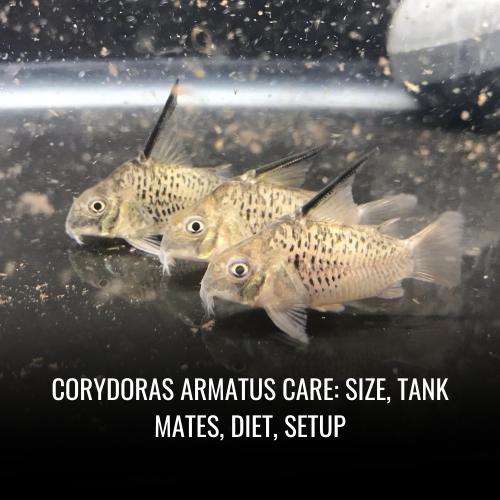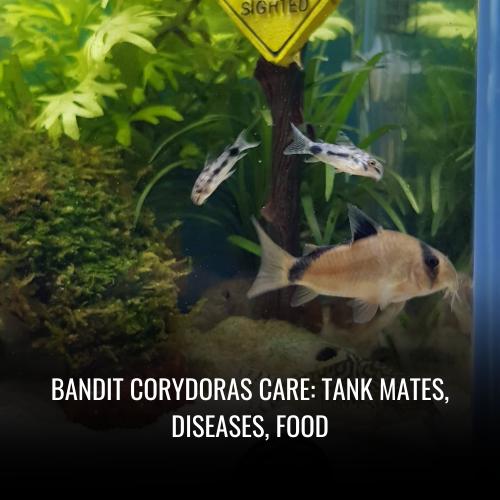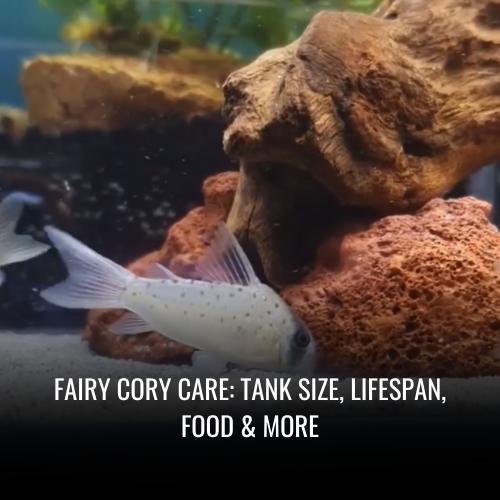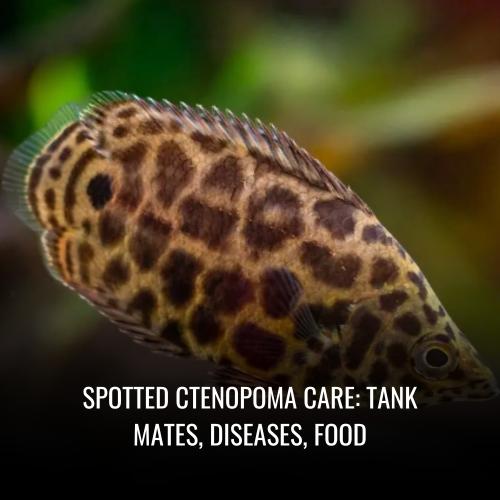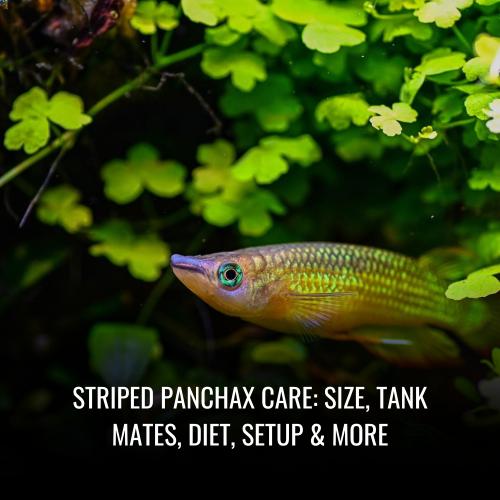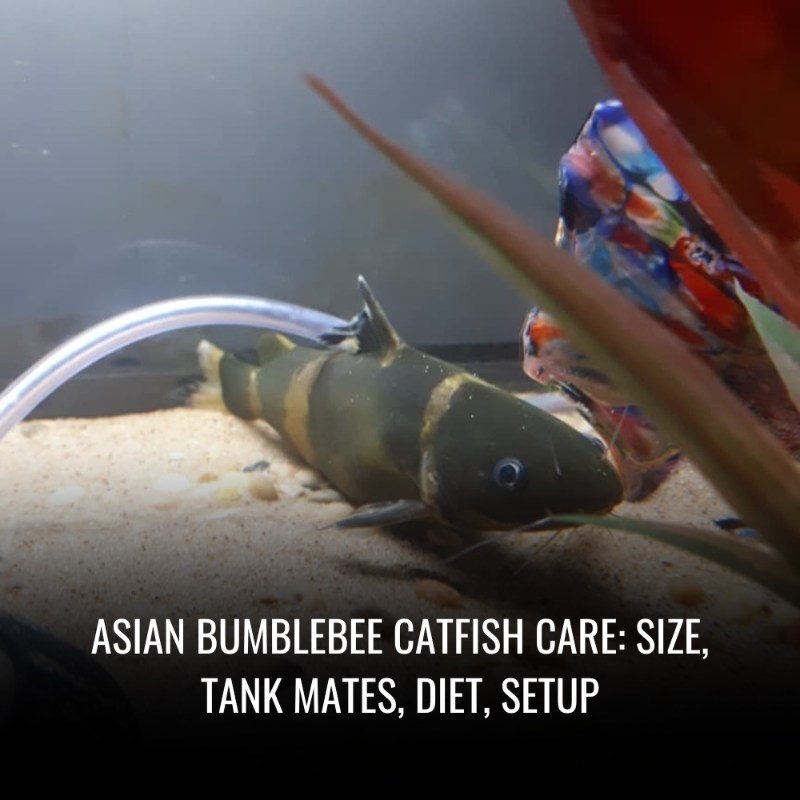Dainty cory Care: Size, Tank Mates, Diet, Setup & More
This post contains affiliate links. As an Amazon Associate, we earn from qualifying purchases.
The Dainty Cory, scientifically referred to as Corydoras habrosus, is a small and delightful species of catfish commonly found in South America, specifically in the Orinoco River basin. They are known for their small size, reaching an average length of around 1 inch, making them a perfect fit for smaller aquarium setups.
| Property | Information |
|---|---|
| Scientific name | Corydoras habrosus |
| Common name | Dainty Cory |
| Family | Callichthyidae |
| Usual size in fish tanks | 1-1.5 inches |
| Recommended pH range | 6.0-7.5 |
| Recommended water hardness | 2-15 dGH |
| Recommended temperature | 72-78°F |
| Reproduction | Egg scatterers, use plants for spawning and lay eggs on the substrate |
| Origin | South America, specifically the coastal regions of Brazil and Uruguay |
| Temperament to its own species | Peaceful and social |
| Temperament toward other fish | Non-aggressive and peaceful |
| Usual place in the tank | Bottom-dweller |
| Lifespan | 3-5 years |
| Tank size requirement | Minimum of 10 gallons |
| Filtration system | Consider gentle filtration, as they prefer slower-moving water |
| Sexual dimorphism | Females are typically larger and broader than males |
| Substrate cleaning | Beneficial for a cleaner substrate due to their scavenging nature |
Scientific Name
The Dainty Cory, scientifically known as Corydoras habrosus, is a diminutive freshwater fish that captures the hearts of aquarists with its delicate charm. As a member of the Callichthyidae family, this species proudly claims its origins in the abundant ecosystems of the Amazon, particularly thriving in the Madeira River basin of Brazil.
In 1966, the Dainty Cory was first described by Joachim Knaack, a reputed German biologist. He chose the species name ‘habrosus’, rooted in Latin, conveying the notions of grace and finesse that the fish exhibits. Although its dainty appearance often leads to confusion with Corydoras hastatus, another small-scale Corydoras species, the Dainty Cory holds its unique place among freshwater enthusiasts for its unassuming elegance and playful behavior.
With its scientific nomenclature, C. habrosus not only reflects its physical attributes but also its fascinating journey from the lush Amazonian waters to the intimate setting of home aquariums worldwide. The Dainty Cory continues to be a delightful subject of discovery and enjoyment within the aquatic community.
Average Size
When considering incorporating the Dainty Cory, or Corydoras habrosus, into your aquarium, it is essential to understand the size-related requirements of these peaceful schooling fish. As adults, they reach an average size of 1.4 inches (3.5 cm), which places them on the smaller end of the freshwater fish spectrum. Upon purchase, these charming creatures are typically even smaller, generally measuring between 3/4 – 1 inch (1.9 – 2.5 cm).
These dimensions lend themselves well to life in cozy aquatic spaces. The recommended tank length for comfortably housing a group of Dainty Corys is at least 20 inches (50 cm), allowing them to explore and exhibit natural behaviors while still being manageable for most home aquarists.
Closely related is the Pygmy Cory, C. pygmaeus, also known as Dwarf catfish. It sizes up comparably, with an adult average size of up to 1.5 inches (3 cm), and shares the long-lived nature of the Dainty Cory, with both species potentially reaching a lifespan of 4 years in a well-maintained habitat.
Average Size Table:
| Species | Adult Size | Purchase Size | Recommended Tank Length |
|---|---|---|---|
| Dainty Cory | 1.4 in | 3/4 – 1 in | 20 in |
| Pygmy Cory | 1.5 in | Similar to Dainty Cory | Similar to Dainty Cory |
Considering their diminutive stature, the Dainty Cory remains an admirable choice for aquarists who appreciate the grace of smaller freshwater fish.
Lifespan
Lifespan is a fundamental aspect to consider when welcoming the Dainty Cory, Corydoras habrosus, or their relatives, the Pygmy Cory, C. pygmaeus, into your home aquarium. The Dainty Cory can flourish for up to 5 years under prime conditions, with some even surpassing this average. On the other hand, the Pygmy Cory has a slightly shorter, yet still commendable, potential lifespan of up to 4 years.
Achieving these life expectancies is closely linked to the quality of care provided, including maintaining excellent water quality, stable water parameters, and a nutritious diet. Adhering to optimal care standards seems to be the key to potentially extending their lifespans beyond the typical expectancy.
It’s essential to be aware that these estimations vary with individual fish. As an aquarist, it’s your ongoing commitment and diligent husbandry that could contribute to a healthy and possibly extended lifespan for your Dainty or Pygmy Corys.
Lifespan Comparison:
| Species | Average Lifespan | Note |
|---|---|---|
| Dainty Cory | Up to 5 years | Cases of longer lifespan with exceptional care |
| Pygmy Cory | Up to 4 years | Similar care can result in full, healthy lifespans |
Remember, long-term commitment is crucial for these peaceful fish, shaping them into a delightful addition to any freshwater aquarium.
Natural Habitat
The Salt and Pepper Pygmy Corydoras, known for their distinctive coloration and charming demeanor, hail from the serene Upper Orinoco River Basin of South America. Venezuela and Colombia are blessed with these diminutive treasures, which find sanctuary in the floodplains and seasonal wetlands inherent to the region.
In the wild, the natural habitat of these Corydoras is a complex tapestry of leaf litter and lush vegetation. This setting is not only picturesque but provides essential shelters that play a navigational role for these agile swimmers.
This diverse plant life in their ecosystem goes beyond aesthetics; it’s a functional haven that nurtures and sustains the Salt and Pepper Pygmy Corydoras. The Upper Orinoco River Basin’s rich and varied terrain fosters a dynamic environment where these freshwater fish can thrive naturally.
Here’s a glimpse into the habitat essentials of the Salt and Pepper Pygmy Corydoras:
Habitat Characteristics:
- Geographical Location: Upper Orinoco River Basin in South America.
- Countries: Venezuela and Colombia.
- Water Features: Floodplains and periodic wetlands.
- Environment: Abundant leaf litter, dense vegetation.
- Ecosystem: Diverse plant life fostering a vibrant aquatic community.
This rich natural landscape plays a critical role in the health, survival, and behaviors of the Salt and Pepper Pygymy Corydoras in their native waters.
Appearance
At first glance, the Pygmy Cory Catfish captivates with its shimmering silver or bronze scales. Sized at a dainty 3 cm (1.5 inches), they make a subtle yet enchanting impact in any freshwater aquarium. Traversing the length of their body is a distinguishing black stripe, a striking contrast to their metallic hue.
It’s their face, however, that exhibits a playful touch of character, adorned with a pattern of spots—an aquatic version of freckles that complements their large, expressive eyes. These ocular features add a sense of vitality and awareness, often indicative of their curious nature.
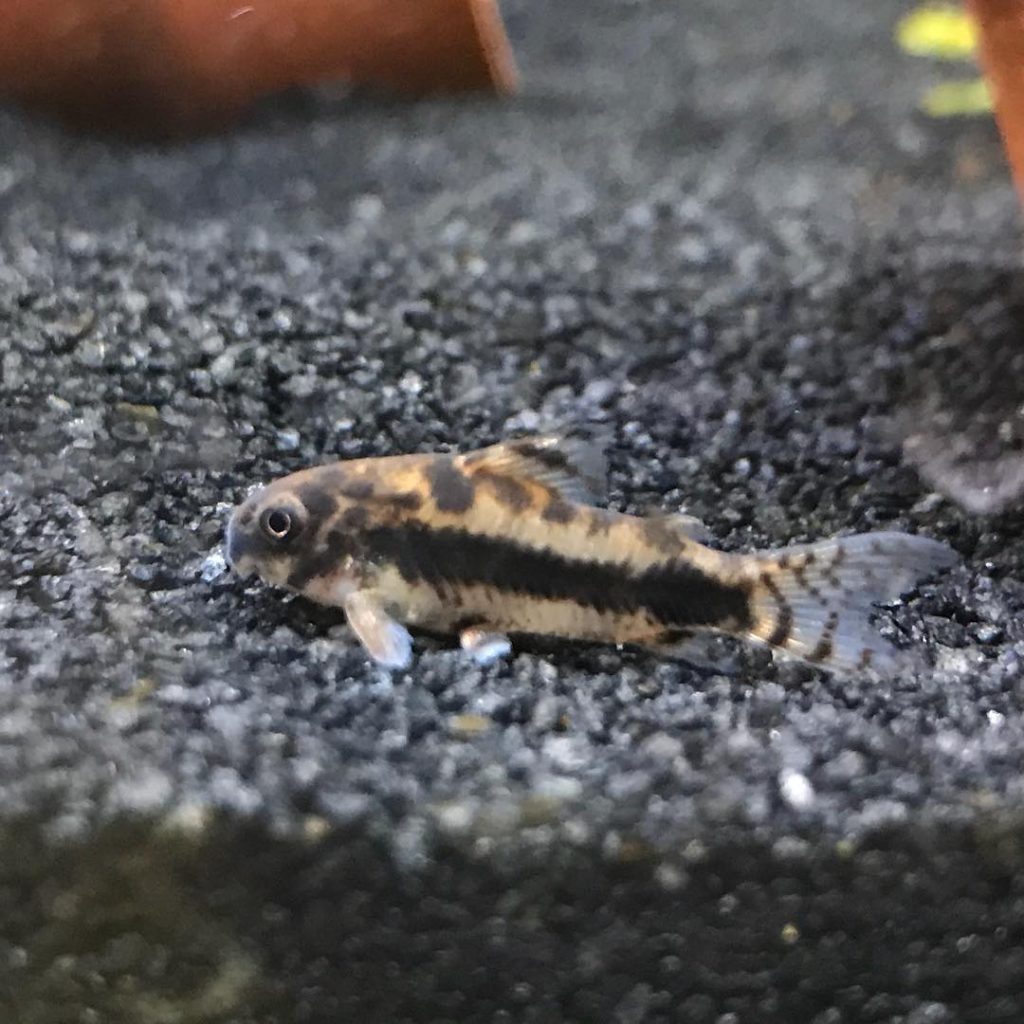
Their aesthetic charm is further enhanced by the fins, almost ethereal in appearance. These transparent membranes can carry hints of pink or yellow, adding a delicate flush of color to their streamlined form. Despite their petite embodiment, Pygmy Cory Catfish are a hive of activity. Their spritely antics bring a dynamic energy to the aquatic scene.
In short, the appearance of the Pygmy Cory Catfish is marked by:
- A bold black longitudinal stripe
- A playful spot pattern on the head
- Large, lively eyes
- Silvery or bronzy base color
- Transparent fins with possible pink or yellow hues
Their tiny stature, coupled with their lively demeanor, makes these freshwater fish an undeniably engaging sight.
Behavior & Temperament
The Dainty Cory, a peaceful and sociable freshwater fish, exhibits congenial behavior both with its own species and with others. Known for their peaceful disposition, they spend much of their time as bottom feeders, busily scavenging along the substrate without displaying fin-nipping or aggressive tendencies. In a community tank setting, they are typically amiable and best flourish in groups that emulate their natural schooling behavior, which reduces stress and enhances their active social dynamics. Their gentle nature makes them ideal companions for other non-aggressive fish, despite their origins in the dynamic ecosystems of Central America.
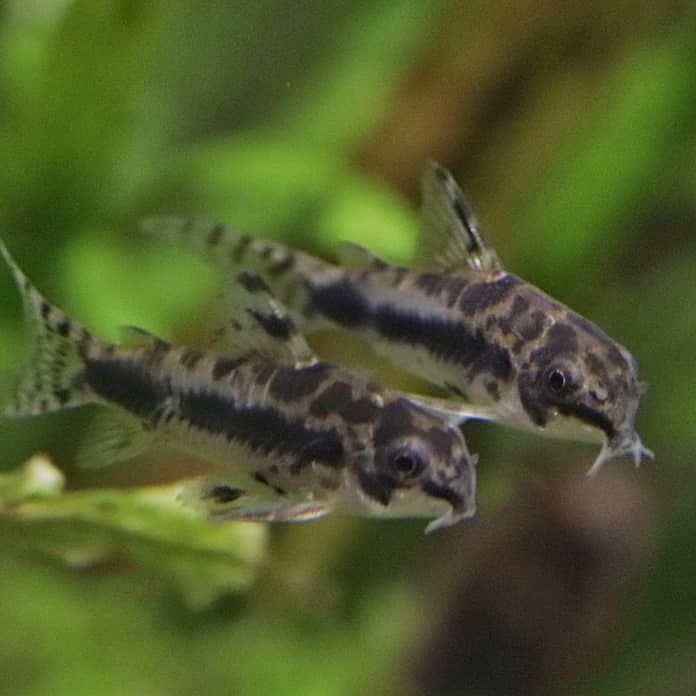
Are Dainty cory Fin Nippers?
Dainty Corys are recognized for their peaceful interaction and are not known to engage in fin-nipping behavior. They coexist harmoniously alongside other aquarium inhabitants, focusing on their own activities without disturbing their tank mates.
Are Dainty cory Aggressive To Each Other & Other Fish?
Aggression is not characteristic of the Dainty Cory’s behavior, either towards members of their own species or towards other fish. They are calm and unassertive, making them excellent residents in a community tank.
Are Dainty cory Friendly To Each Other & Other Fish?
Dainty Corys are friendly schoolers that display charming social behavior. They can often be seen interacting gently with each other, as well as with compatible species such as tetras, danios, and small cichlids.
Are Dainty cory Schooling Fish?
Indeed, Dainty Corys are schooling fish and exhibit the healthiest and most natural behavior when kept in groups. A school of six or more is considered ideal to maintain their well-being and allow their social nature to thrive.
Can You Have Just One Dainty cory In The Tank?
While it’s physically possible to keep just one Dainty Cory, it’s not recommended due to their schooling nature. A solitary Dainty Cory may display signs of stress and lack the kind of social interaction necessary for their overall health.
Do Dainty cory Need To Be In Groups?
Dainty Corys require the companionship of their own kind and should be kept in groups, ideally with at least five others. This grouping reflects their natural living conditions, provides security, and encourages healthy social and feeding behaviors.
Food & Diet
Dainty Corydoras, commonly known as the Dainty Cory, are omnivorous scavengers, enjoying a well-rounded diet that includes plant-based and protein-rich foods. Their feeding habits contribute significantly to maintaining a cleaner aquarium, as they continuously forage for food at the bottom of the tank. Although they can help control algae to a certain extent, they should not be considered the sole means of algae removal and still require a diverse diet.
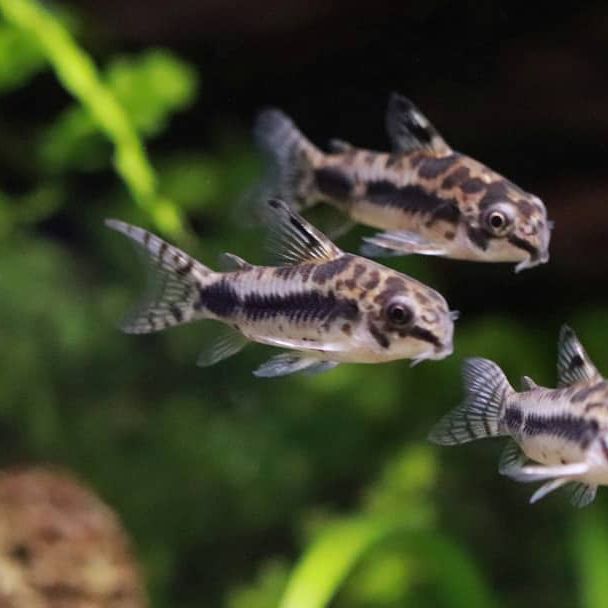
Do Dainty Cory Eat Algae?
Yes, Dainty Corys will consume algae, which can be a part of their diet. They will readily accept algae wafers and sinking pellets specifically designed as complete food for bottom dwellers. However, to ensure a balanced diet and optimal health, algae should be supplemented with other types of nutrition.
Do Dainty Cory Eat Shrimp?
Dainty Corys are not hunters by nature, so they are unlikely to prey on adult shrimp. However, they may consume tiny baby shrimp if they stumble upon them. These occurrences are relatively rare, as Dainty Corys are primarily focused on foods like wafers, pellets, and bloodworms. Older shrimp and shrimplets over a week or two old are typically safe from these peaceful bottom-dwellers.
Do Dainty Cory Eat Bloodworms?
Bloodworms are an excellent treat for Dainty Corys and can be offered occasionally to complement their staple diet. Frozen, live, or freeze-dried bloodworms provide additional nutrition and variety, which can enhance the Dainty Corys’ overall well-being. Feeding should occur early in the evening when the fish are more active.
Do Dainty Cory Eat Mosquito Larvae?
Dainty Corys can consume mosquito larvae along with many other microorganisms they find at the bottom of their environment. Offering mosquito larvae can mirror the protein-rich aspects of their natural diet and help promote growth and vitality.
Do Dainty Cory Eat Planaria?
While Dainty Corys’ diet mainly consists of commercial fish food, in their natural habitat, they consume various worms and insect larvae. Therefore, they would likely eat planaria if present in the aquarium, providing an additional source of protein and serving as part of their omnivorous dietary requirements.
Do Dainty Cory Eat Plants?
Dainty Corys are not known to actively consume live plants. However, they do appreciate occasional plant food, such as blanched vegetables – zucchini, spinach, peas, and cucumber. It is crucial to ensure all vegetables are free of pesticides before adding them to the tank. Commercially prepared sinking catfish pellets and green food designed for herbivorous fish can also round out their diet.
In summary, the Dainty Cory’s diet is quite versatile, encompassing algae, bloodworms, planaria, occasional plant matter, and a variety of other commercial and fresh foods suitable for bottom feeders. This varied intake is essential in replicating their natural foraging behavior and keeping them healthy in a home aquarium.
Sexing: Male vs Female
Males: Generally, males are smaller with a slimmer body shape. They display their narrowest width just behind their pectoral fins, creating a more streamlined profile. During spawning, males become quite active as they engage in a chase, eagerly mating with ready females.
Females: Female Dainty Corys tend to be plumper, and this difference is most prominent when viewed from above—females appear widest at the center of their bodies. When in a well-fed state or ready to breed, females exhibit a wider and rounder body shape, especially noticeable from the side. They are usually the largest individuals during the mating process.
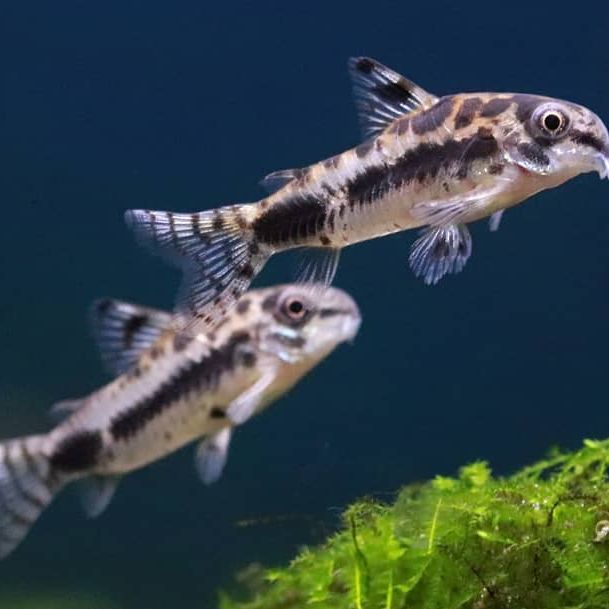
Observing these physical and behavioral characteristics can help aquarists distinguish between the sexes and manage their fish stock effectively. Here’s a quick guide:
| Gender | Body Shape (top view) | Body Shape (side view) | Size | Behavior During Spawning |
|---|---|---|---|---|
| Male | Widest behind pectoral fins | Slimmer appearance | Smaller | Active chase |
| Female | Widest at the center | Plumper and rounder | Larger | Largest and most ready |
Focusing on the mentioned physical attributes and behaviors will assist in correctly sexing Dainty Corys in your aquarium.
Dainty cory Tank Mates
When choosing tank mates for your Dainty Corys, prioritize peaceful and similarly-sized species to ensure a harmonious community aquarium. Ideal companions include tetras, danios, and select small cichlids known for their calm demeanor. These companions will not intimidate your Dainty Corys, allowing them to thrive.
Avoid pairing your Dainty Corys with large or aggressive fish that may cause stress or harm. To protect your Corys’ delicate barbels, which are essential for foraging, opt for a tank environment free of sharp edges. Choose a soft, sand substrate and decorations that won’t abrade these sensitive whisker-like organs.
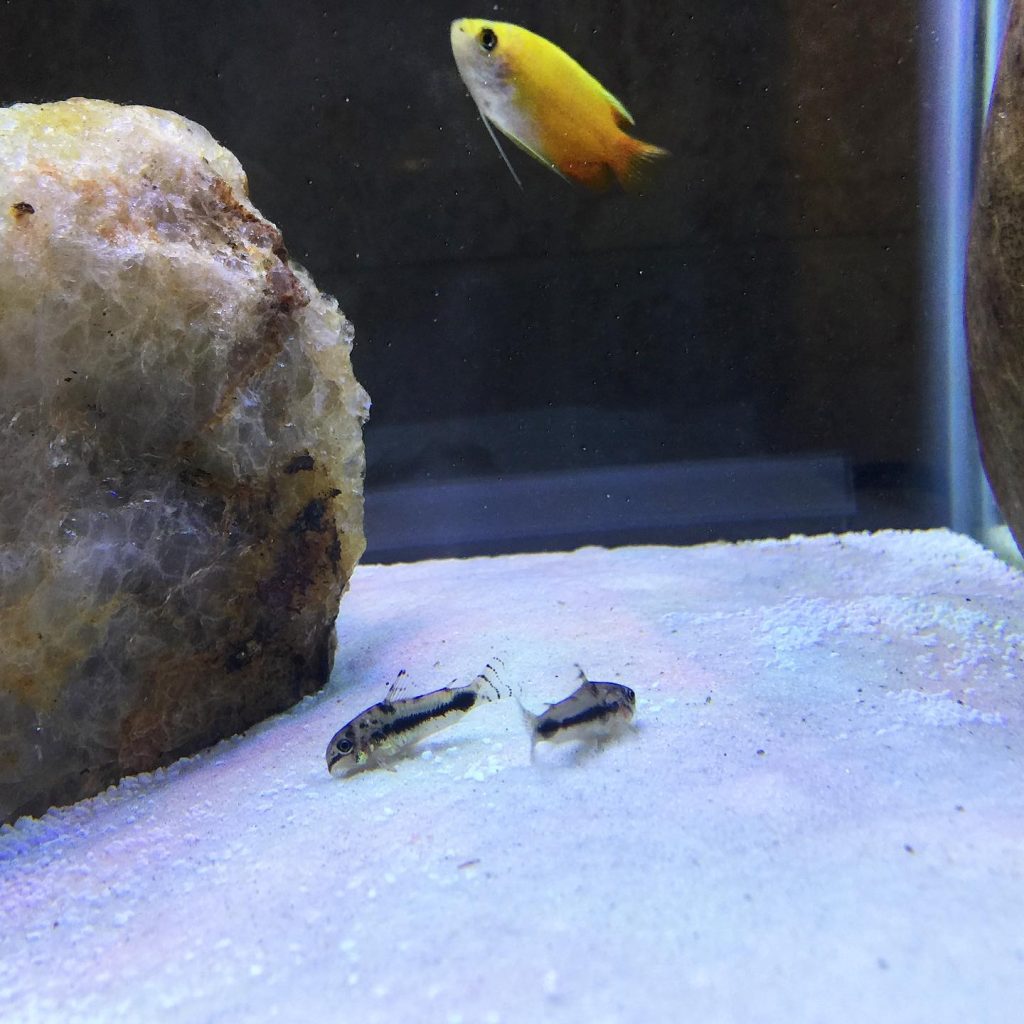
As a social fish species, Dainty Corys gain security and exhibit natural behavior when in a school of six or more. To keep your Corys at their happiest, you should also include elements like smooth surfaces and fake plants which support their need to sift and explore without the risk of injury.
Here’s a clear snapshot of what to consider for a thriving Dainty Cory community:
| Must-Haves | Avoid | Tank Mates |
|---|---|---|
| Peaceful small fish | Aggressive/large fish | Tetras, Danios |
| Smooth substrate | Sharp decorations | Small Cichlids |
| Schooling (6+ fish) | Isolation | |
| Safe decorations | Rough substrate |
Incorporating these factors will ensure your Dainty Corys and their tank mates live healthily and peacefully.
Aquarium Setup
Creating a comfortable and engaging environment for Dainty Corys, also known as Corydoras habrosus, is vital for their well-being. An ideal aquarium setup will include a balance of the right tank size, water parameters, filtration system, and lighting to mimic their natural habitat.
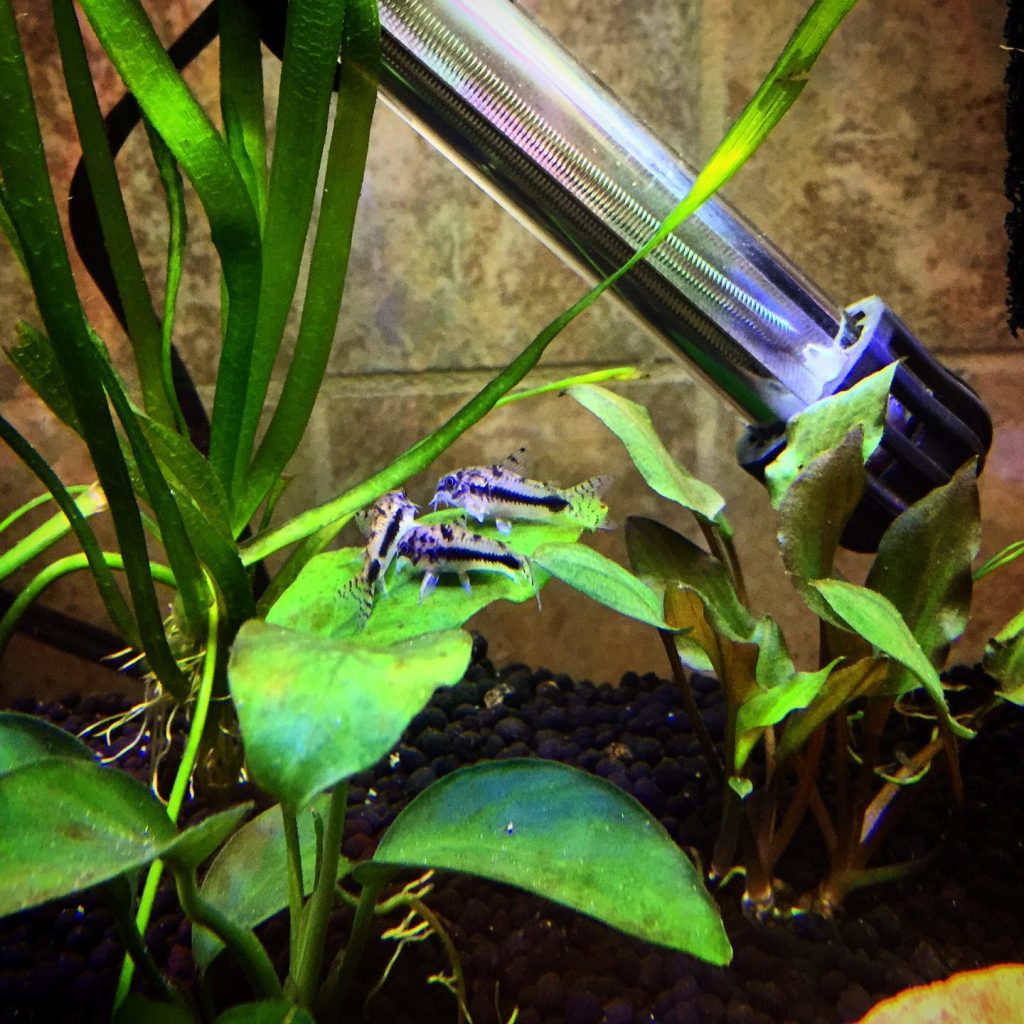
Ideal Tank Size
When it comes to housing Dainty Corys, space is an important consideration. For these active bottom dwellers, a minimum tank size of 12 gallons or 45 liters is recommended. The preferable dimensions for such a tank would be a length of at least 20 inches or 50 cm. This space allows a school of at least 6 fish to forage and engage in their natural schooling behavior without feeling cramped. A larger tank size will also accommodate their need for a gentle water flow and facilitate better water quality management.
| Cory Type | Minimum Tank Size | Tank Length |
|---|---|---|
| Dainty Cory | 12 gallons (45 l) | 20 inches (50 cm) |
| Pygmy Cory | 10 gallons (40 l) | Not specified |
| African Dwarf Frog | 10 gallons | Not specified |
| L333 Pleco | 20-30 gallons | Not specified |
Ideal Water Parameters
Dainty Corys flourish in water that is slightly acidic to neutral, with a pH range between 6.5 and 7.0. They do well in water that is soft to moderately hard, with a dKH range of 2-12. The water temperature is best kept in the cool to warm spectrum, ranging from 22 to 26 degrees Celsius (72 to 79 degrees Fahrenheit). Maintaining these water parameters is key to supporting the fish’s health and well-being.
| Water Parameter | Ideal Range |
|---|---|
| pH | 6.5 – 7.0 |
| dKH | 2-12 |
| Temperature | 22 – 26°C (72 – 79°F) |
Filtration
Efficient filtration is paramount in an aquarium housing Dainty Corys, ensuring they live in excellent water quality conditions. To sustain the proper acidic environment, peat filtration systems are recommended. Such systems release tannins into the water, not only aiding the maintenance of desired pH levels but also enhancing the natural coloration of the Corys. Furthermore, a mature sponge filter is particularly effective for rearing fry, promoting a well-oxygenated and safe environment for young fish. The filtration should provide a gentle water movement to replicate the calm streams of their natural habitat in Central America and prevent stress or damage to the fish.
Lighting
For Dainty Corys, lighting should emulate the dimmer conditions of their natural environment, avoiding high-intensity lights that could cause distress. The use of floating plants like Duckweed can help diffuse light, providing shaded areas that make the Corys comfortable. Aponogeton plants, which can thrive under low to moderate lighting conditions, are excellent additions to an aquarium setup for Dainty Corys, as their ease of care and adaptability make them suitable for various lighting setups.
| Lighting Condition | Plant Choice | Benefit |
|---|---|---|
| Dim to Medium | Duckweed | Provides shade and comfort |
| Low to Moderate | Aponogeton | Thrives easily, offering natural decoration |
By adhering to these guidelines for size, water parameters, filtration, and lighting, aquarists can ensure a healthy and aesthetically pleasing environment for Dainty Corys to thrive.
Common Possible Diseases & Prevention
Like all freshwater fish, Pygmy Corys, including the diminutive Dainty Cory (C. habrosus), can fall prey to ailments such as Ich, fin rot, and bacterial infections. Vigilance in monitoring their health and maintaining tank conditions is crucial.
To avert disease, it is key to ensure good water quality. This involves regular water changes, a functioning filtration system, and a well-balanced nitrogen cycle. Additionally, quarantining new fish or plants is a preventive step that shouldn’t be overlooked, safeguarding against introducing pathogens to the established community.
| Prevention Measures | Description |
|---|---|
| Water Quality | Regular changes and proper filtration |
| Quarantine | Isolate new additions |
| Balanced Diet | Adequate nutrition without overfeeding |
| Observation | Monitor behavior and physical signs |
A balanced diet is essential; avoid overfeeding as it can result in stress or health issues. Keep an eye out for indications of illness: behavioral shifts, appetite loss, or unusual physical signs. Swift action to treat diseases is imperative for the well-being of these peaceful schooling fish.
List of Common Signs of Illness:
- Erratic swimming
- White spots (Ich)
- Frayed fins (Fin rot)
- Inactivity or lethargy
- Clamped fins
Should such symptoms arise, it’s important to diagnose promptly and provide the appropriate treatment to ensure the health and happiness of your Pygmy Cory community.

Breeding Dainty cory In Aquarium
Dainty Corys, a delicate freshwater species, thrive when bred in the right conditions. Originating from Colombia and Venezuela, these peaceful fish can have a lifespan of up to five years or more. For successful breeding, it’s crucial to replicate their natural habitat.
To initiate the spawning process, consider adjusting the water temperature slightly lower. This simulates a cooler climate, prompting the Corydoras habrosus to lay their vibrant orange eggs, often on leaf undersides near the substrate. Once spawned, the fry are minuscule and should start their diet with Infusoria, later transitioning to newly hatched brine shrimp as they grow.
These nocturnal creatures are most active during the night and prefer being in groups. Maintain at least six fish to encourage breeding activity and provide them with the companionship they need.
| Breeding Setup | Specifications |
|---|---|
| Tank Size | Adequate for school of 6+ |
| Water Temperature | Slightly cooler to induce spawn |
| Food for Fry | Infusoria, then brine shrimp |
Remember, Dainty Corys are peaceful schooling fish suitable for community tanks. Keep them with similar non-aggressive species to ensure a harmonious aquatic environment.
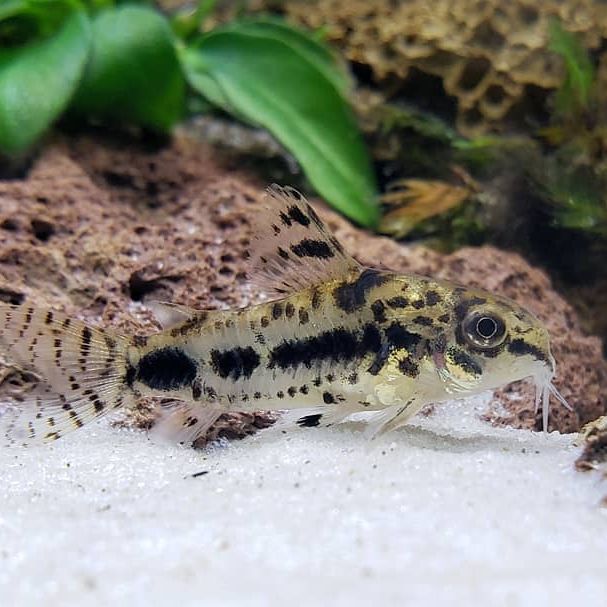
Are Dainty cory Easy To Keep?
Absolutely! Dainty Corys are renowned for their easy upkeep and sociable nature, making them an excellent choice for both novice and experienced aquarium enthusiasts. Originating from the flowing waters of Colombia and Venezuela, they appreciate company and are best kept in shoals of six or more. This not only bolsters their confidence but also invigorates their natural group behaviors.
Their feeding regimen is just as straightforward. Dainty Corys aren’t picky eaters and will gladly accept a variety of foods, including algae wafers, sinking pellets, and the occasional treat like bloodworms, ensuring they’re both happy and well-fed.
For those interested in breeding this peaceful species, inducing spawning is a breeze. A slight drop in water temperature can stimulate these fish to lay bright orange eggs, which adds a delightful visual aspect to your tank and offers an engaging breeding project.
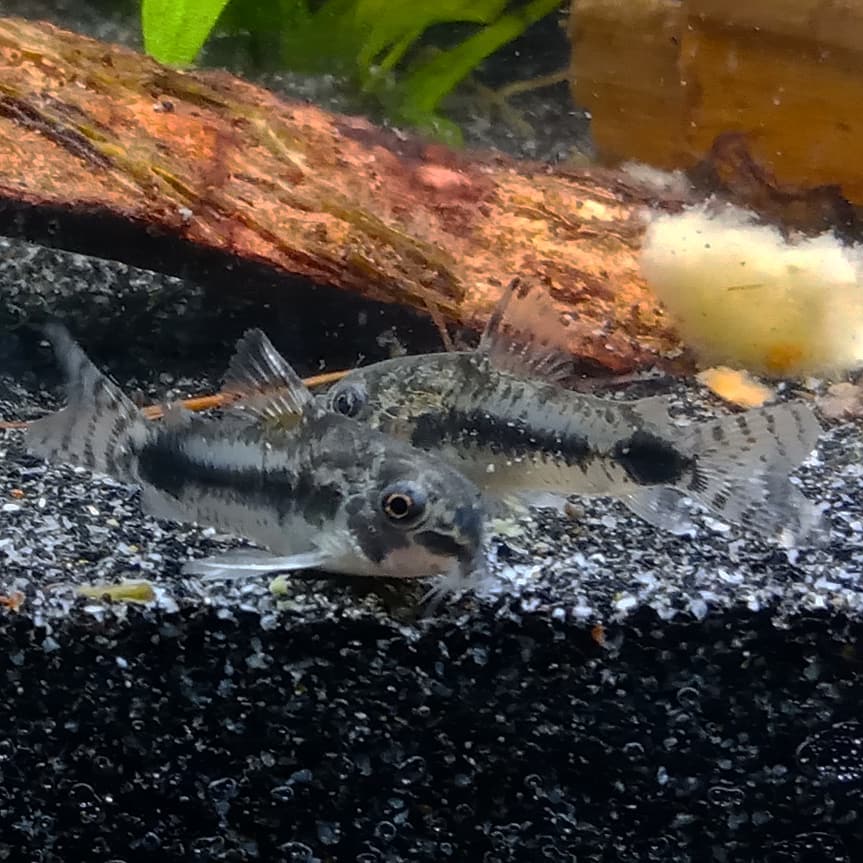
Diet:
- Algae wafers
- Sinking pellets
- Occasional treats (e.g., bloodworms)
Caring for Dainty Corys is rewarding due to their undemanding nature. By mimicking their wild habitat’s conditions and ensuring they’re in a comfortable group, your Dainty Corys will thrive.

